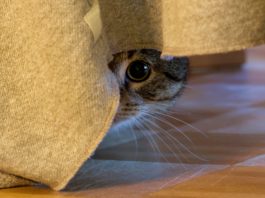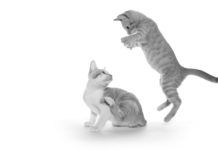Short Takes: December 2017
The September 2017 issue of the Journal of Veterinary Internal Medicine included the article The Relationship between Brachycephalic Head Features in Modern Persian Cats and Dysmorphologies of the Skull and Internal Hydrocephalus, by Schmidt et al. This study evaluated the two types of Persian cats, the traditional doll-face and the newer Peke-face, for a correlation between brachycephalic (short-faced) traits and internal hydrocephaly, or abnormal accumulation of cerebrospinal fluid (the fluid that bathes the brain and spinal cord) in the brain. Each cat in the study received a CT scan and an MRI.
Hold the Carbs
In an effort to see what difference diet might make to an obese cats blood glucose control, researchers fed three diets-one high in carbohydrates, one high in fats, and one high in protein-to healthy-weight and obese cats and measured plasma levels of glucose, insulin, free fatty acids, and triglycerides. The study, published by BMC Veterinary Research, was done at the University of Zurich.
How to Handle a Finicky Eater
Some cats are just naturally picky and like to have variety in their diet, but changes in eating habits can also be a sign of stress or major illness.
Kidney Failure is a Progressive Disease
Kidney failure is a leading cause of death in domestic cats.
The Odds of Deafness in White Cats
If you own a white cat, you most likely love his striking snowy coat and bright eyes. But you might also know that these brilliant features have implications that go deeper than appearance.
When Acrobatic Prowess Fails Them
When it comes to leaping, landing and twisting in mid-air, cats earn accolades for agility, flexibility and acrobatic prowess. Its not unusual to witness your cat leap effortlessly to the top of the refrigerator and, when ready, to land softly and easily on the kitchen floor. But despite their grace and flexible physique, cats do not always land safely on their feet and can be at risk for painful sprains, broken legs, and other fractured bones.
Cat Scratch Fever Spikes in January
Hand-wrestling your kitten or newly adopted cat may seem like harmless play, but if either would happen to scratch you, you could develop an infection requiring treatment for cat scratch disease (CSD). This rare but potentially serious condition is estimated to affect about 12,500 people annually in the U.S., including 500 hospitalized for treatment. The incidence is higher than medical experts anticipated, according to a new study released by the Centers for Disease Control (CDC).
A New Era in Medicine: Feline Genetic Screening
Complete genomes - genetic blueprints - of numerous cats DNA have been sequenced in what has been described as a new era in veterinary medicine. Cornells Veterinary Biobank, as one example, is a database of DNA and tissue samples from several species. The biobank is supported in part by the Cornell Feline Health Center.
The Most Accurate, Non-Invasive Means to Measure Blood Pressure
There are number of ways to measure the blood pressure in the artery of a patient. The gold standard is the placement of a catheter directly into the artery and measuring the pressure within it, referred to as blood pressure, using a device called manometer. Although this technique is extremely accurate, it requires the placement of an arterial catheter (which generally requires sedation/anesthesia in veterinary patients) and specialized equipment, and is associated with risks such as bleeding and infection. For these reasons, this invasive method of measuring blood pressure is not usually employed in cats during a routine veterinary visit.
Cats Likely Candidates for Giardia
Every time your cat nuzzles up to a neighbors cat or scratches in wet soil where another cat has relieved himself, he runs the risk that he will pick up an uninvited guest: the parasite called giardia. It survives throughout the country in any place thats wet or damp, and thrives inside its hosts. Infection rates will vary depending on geographic location but one study has shown the rates to be about 10 percent in cats, says Brian Collins, DVM, Section Chief of the Community Practice Service at Cornell University College of Veterinary Medicine.
One Challenge in Pancreatitis: The Lack of Definitive Signs
My cat has recently been diagnosed with pancreatitis. The veterinarian explained to me that it can be difficult to diagnose, but he feels confident that this is the correct diagnosis and has started treatment. My kitty is still not eating well, and Im wondering if it is possible that something else is going on.
An Exciting New Frontier in Medicine
Your arthritic cat walks stiffly, and its difficult to find a medication to treat him without side effects. Could stem cell therapy be an option? Its use in human medicine has grown in the past decade, heralded as a promising treatment for a host of diseases. The latest area of pioneering research, according to the National Institutes of Health, is adult-derived stem cells for repair of the heart.















